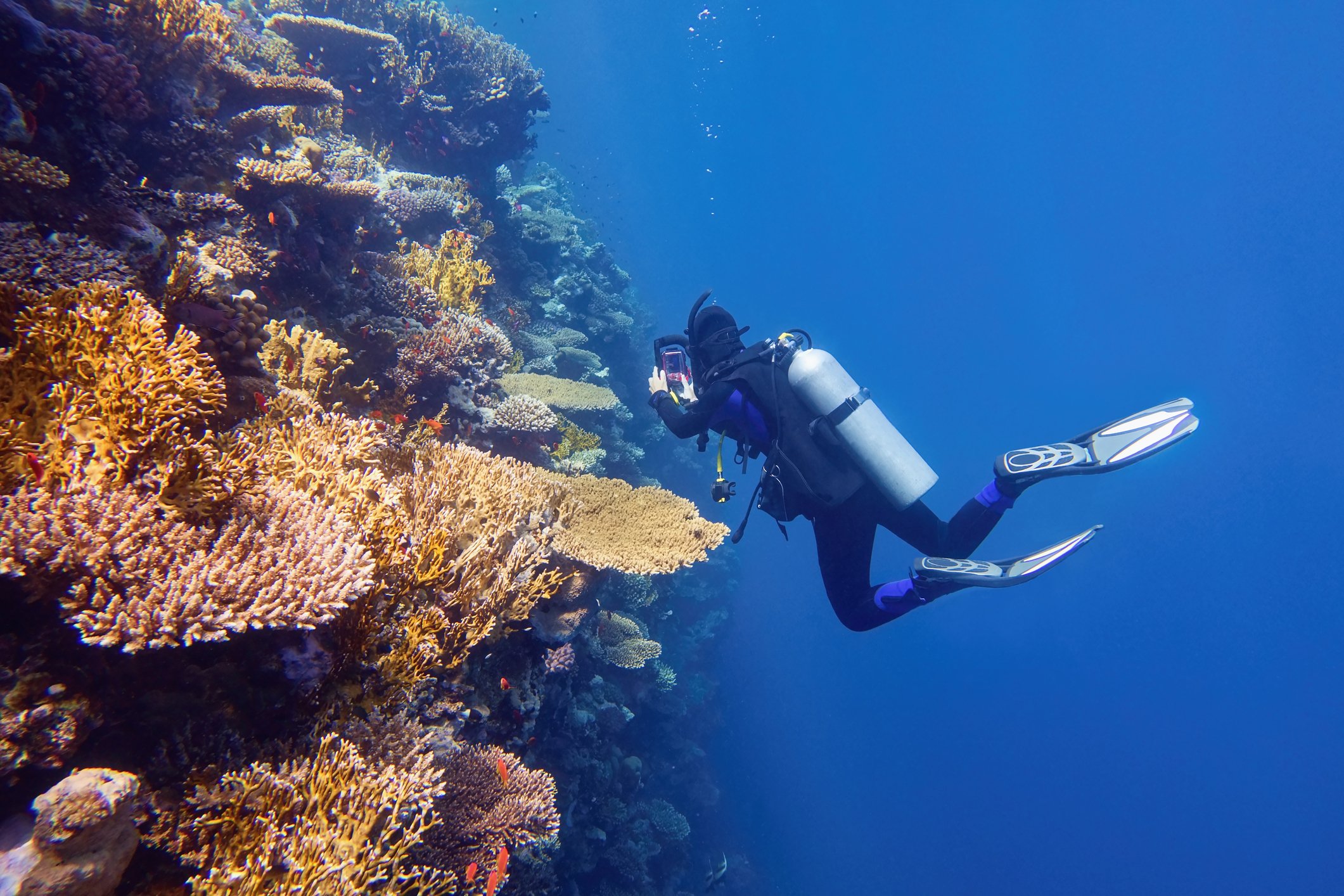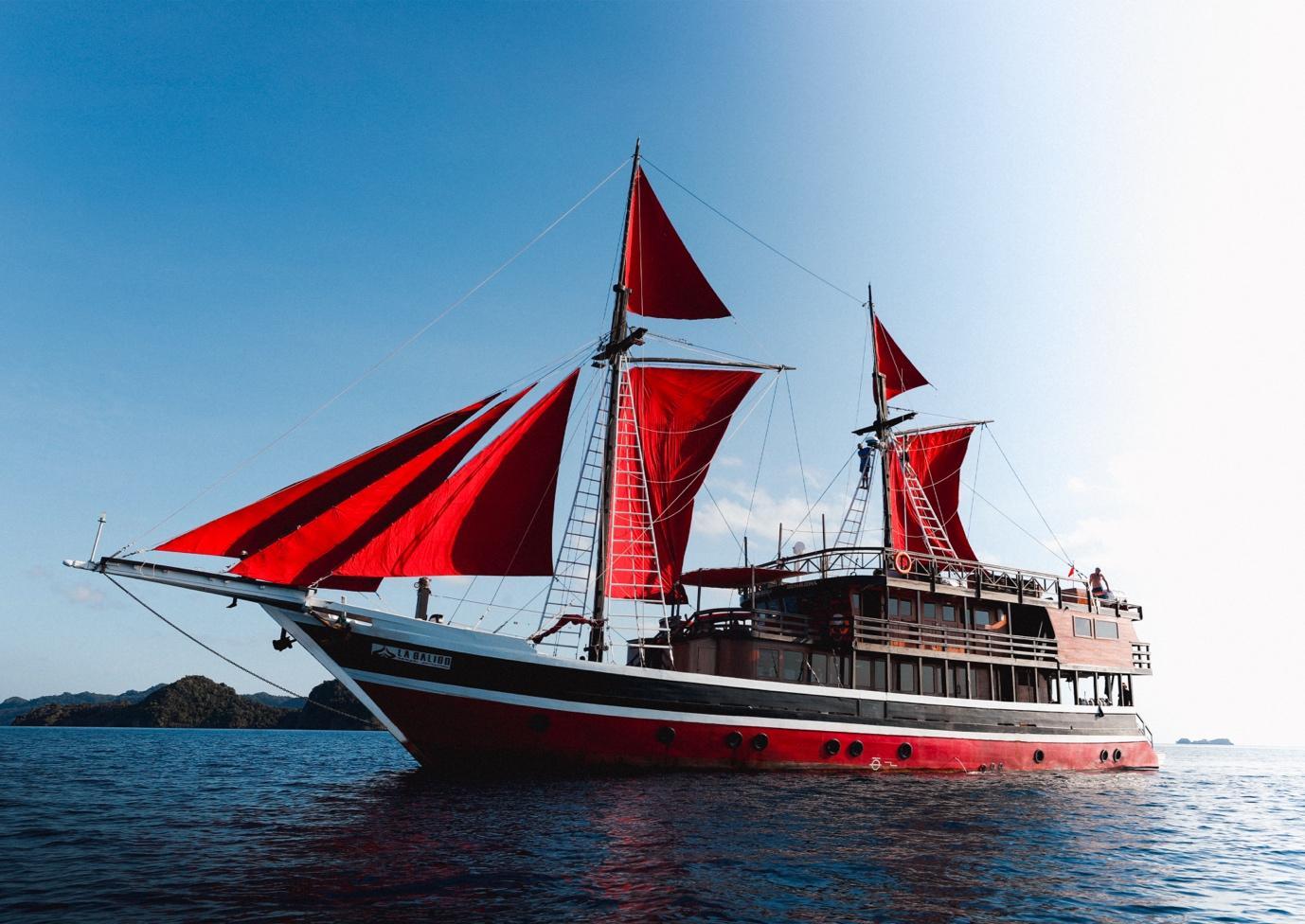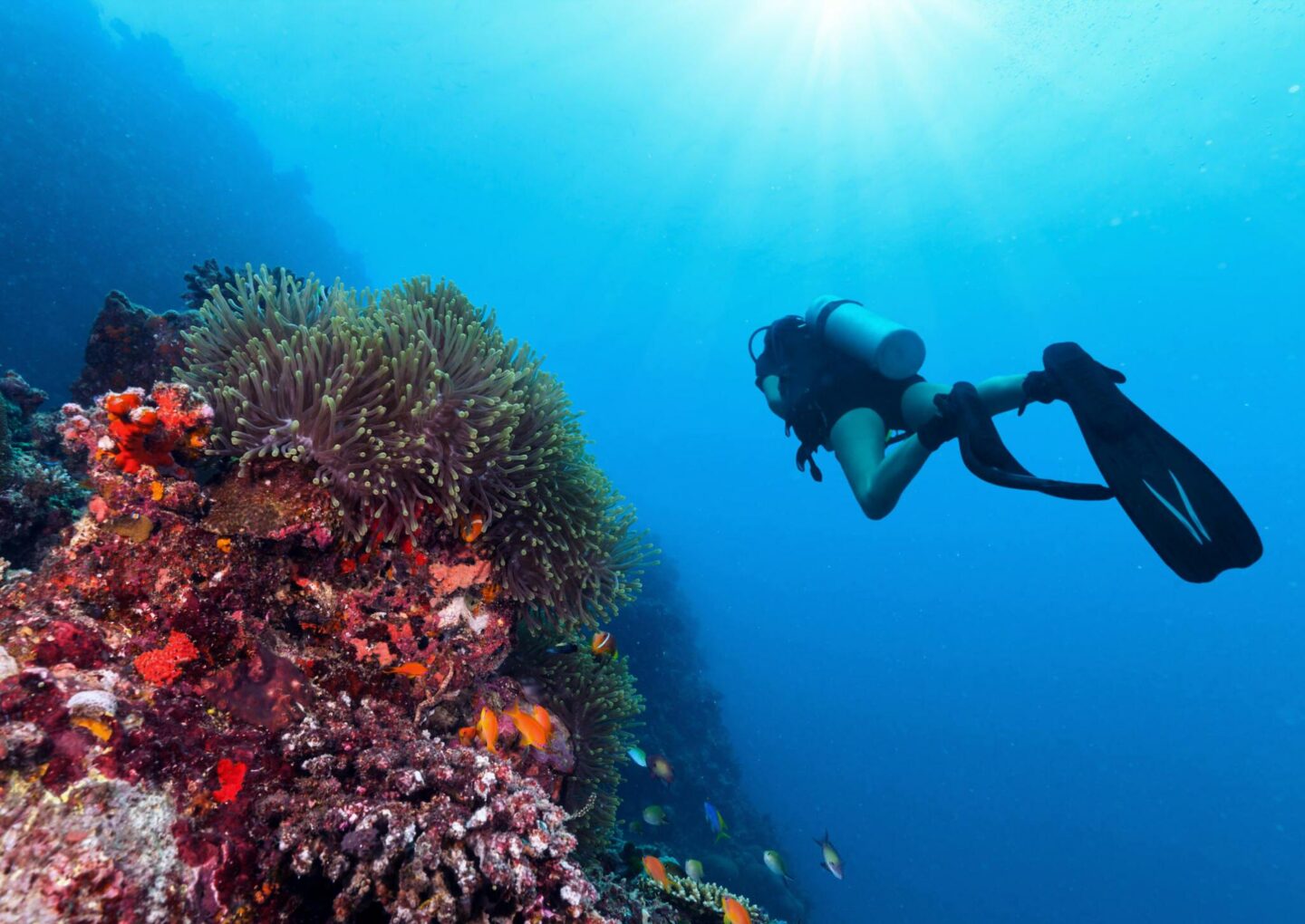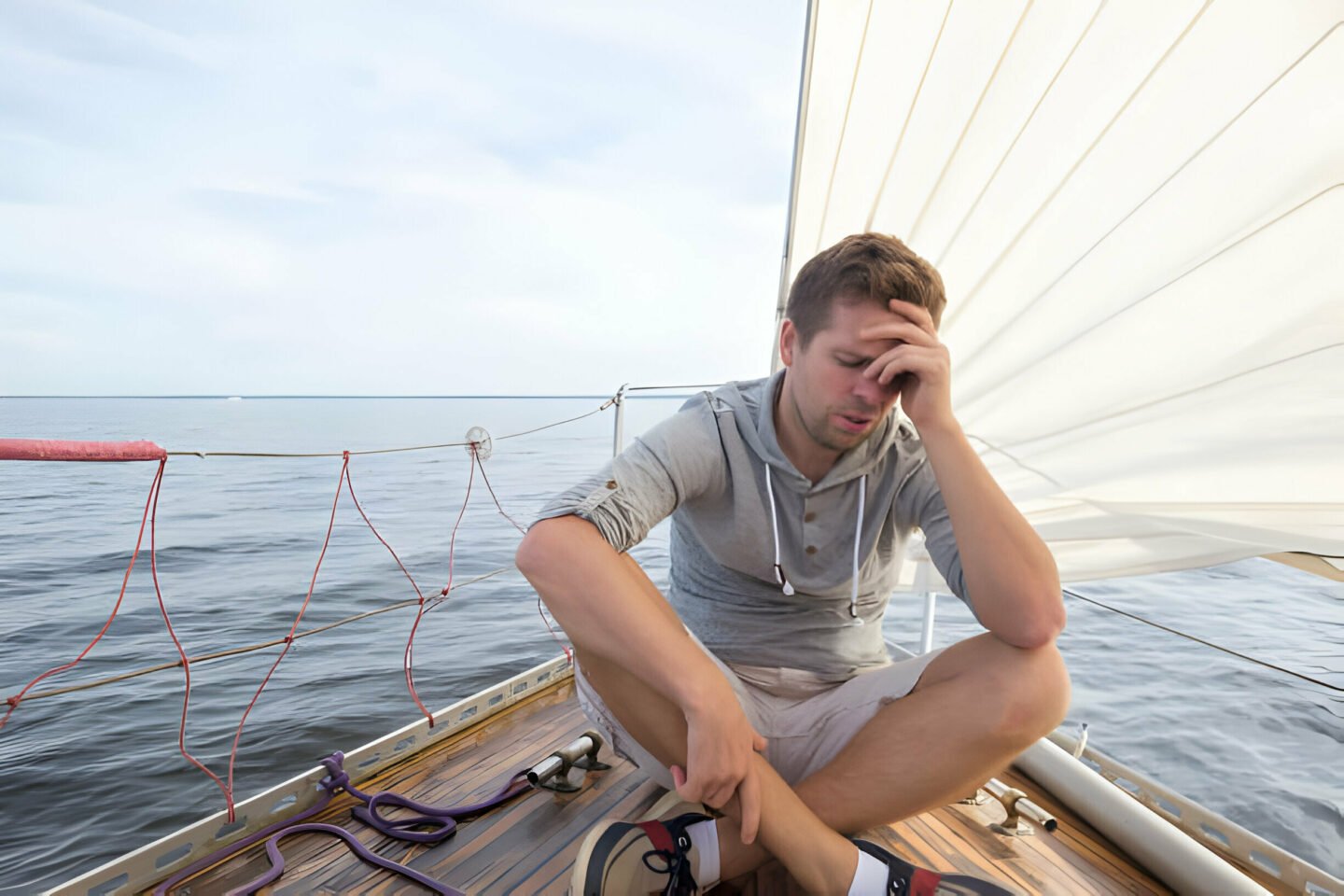Wall Diving: How To Explore, Skills and Tips

Wall Diving is quite a challenging diving activity that often requires divers to be on their toes. Despite its challenges, wall diving is not inherently difficult or dangerous when proper preparation is ensured.
Wall diving is very popular for divers to be able to feel the sensation of the depth of the sea and the expanse of the deep blue sea combined with a very diverse and vibrant underwater beauty.
Differences in walls are determined by three components that vary by country and location. While some walls form steep slopes or descend to terraces, others plunge directly into the depths in an almost perfectly vertical shape.
In addition, most walls consist of complex passages, tunnels and crevices. The wall is home to a wide variety of marine life due to the complexity of its structure.
Sponges and corals cover the wall’s face, providing a habitat for various marine life such as crabs, tunicates, mollusks, crinoids, and creatures of different sizes and shapes hiding in the holes and crevices. It is not uncommon to see large fish such as sharks, rays or stingrays walking around.
Exploring Wall Diving
For wall diving, you can try it with a guided group or alone with your friends. A guided tour may be a better option if you are new to wall diving as it is easier and there is almost no worry.
Dive guides are usually in front and behind the group in most places. This is especially helpful if you are diving and have to swim through winding passages.
For those exploring the wall alone, careful consideration of dive planning, navigation, depth, air supply, and time on the seabed is crucial.
It is very important to understand the characteristics of the wall you are about to dive, such as the depth at which the wall starts, whether you should dive overhead, or whether there is a current along the wall.
As always, try to descend to the highest depth you plan to go first and then gradually ascend to view the wall.
The simplest part of wall diving is actually navigation, you only have two directions to choose from, and the wall will be on your left or right side, depending on the direction.
Most people prefer places to wall dive in clear, warm tropical waters with diverse and colorful marine life. For example, Cozumel, Cayman Islands, Palau, Bahamas and Fiji are the best places for wall diving.
However, inland dive sites in North America and the US also have thin vertical facades. Some great locations for wall diving are Puget Sound in Washington, Monterey Bay, and Catalina Island in California, among others.
Essential Skills to Have in Wall Diving
While wall diving typically doesn’t demand specialized training, maintaining good fitness and mastering basic scuba skills are crucial. Also, to enjoy diving at depths greater than 60 feet (18 m), you may need to take a specialized deep diver course.
The rules of scuba don’t suddenly change once you go beyond 60 feet deep, it is important to monitor your air supply, depth and time on the bottom. Remember that with increasing depth, you will consume air and accumulate nitrogen faster, and the time without decompression will become shorter.
Relevant scuba courses will address the above and help you develop the necessary abilities and habits.
For this type of dive, buoyancy control is essential as most walls will stretch far beyond your planned maximum depth. This is because you will have no bottom as a reference. As you descend, you will find it harder to float. To slow down the rate of descent and create neutral buoyancy, add air into your BC. Expel the inflated air from your BCD early and often as you ascend. Make sure you stop in a safe place.
The buddy system is also an important capability for wall diving. To avoid a situation where one diver maintains a much shallower depth than the other, consider the communication plan, maximum depth and time on the bottom before entering the water. Make sure the planned depth is comfortable for you and your buddy. Try to stay away from each other.
Finally, see if there is any current along the wall you will be diving. Some walls can be explored in a similar way to diving: You drift when you float with the current, and the boat will simply follow you to the exit point.
If there is a light current, but you are diving from an anchored boat, start by swimming against the current and reverse direction when you return to the boat. Beware of strong up and down currents. These currents can pull you deeper than you want or push you upwards quickly and uncontrollably. And If you are caught in an upwelling current, expel air from your BC to make yourself negatively buoyant and try to swim diagonally out of the current. To avoid the down current, quickly inflate your BC to be more buoyant and move to the nearest wall.
The positive side is that upwellings and downwellings are usually localized, so they can be avoided easily if you know where they occur.
It is recommended that you carry a dive light, safety signaling device, and alternative air supply in addition to the standard equipment. The light will help you search for gaps in the wall, and using a backup air device or air bottle will keep you from relying on friends or other divers in an emergency without air.
In short, wall diving requires specialized skills, such as deep, boat and drift diving. However, you simply choose a site that suits your abilities, learn basic diving techniques, learn to control buoyancy, and you’re good to go.
Wall Diving Tips
Not all dive sites have flat bottoms or gently sloping reefs; in some places in the world, the geology of the area is not as obvious underwater, where submerged coral-encrusted walls make up part or all of the dive site. Walls come in all sizes.
Some walls can reach hundreds of meters in height and stretch several kilometers horizontally, while “mini-walls” measure only a few meters in height and hold back a small portion of the reef slope.
- Buoyancy is an important component that determines your comfort and safety. Since you will be swimming in the middle of the water, you must have controlled buoyancy or buoyancy will control you. If your buoyancy is slightly negative, you will start to “sink”, and as you do, the air in your BCD and wetsuit will compress, making you negatively buoyant more and making you sink faster. You may not realize this is happening as you admire the coral while swimming. Checking your gauges, consulting your buddy, and following your plan is the solution. The opposite effect can occur if your BCD is a little too high. Both of these can cause uncontrollable ups or downs.
- If you want to dive with your buddy, make sure you dive to the greatest depth. Remember that you don’t have a solid bottom to rely on, so you’ll need to watch your depth gauge frequently and adjust your position accordingly.
- Study the shape of the wall-The surface is uneven on most walls. Curves, contours, ledges and banks can be used to shelter from any currents, find hidden marine life and take stunning topographical photos.
- Plan your dive profile and plan a multilevel dive if possible. To do a graded dive, descend to the deepest depth first, then slowly work your way back up.
- Contact and monitor friends-this is important so you don’t exceed your planned limits. Always check your gauges and make sure your buddy is near you and at the same depth. Remember that you should never get too close for more than two seconds.
- Take your time-the walls provide habitat for many incredible species and sea creatures, so check out every nook and cranny. You’ll be surprised by what you see when you peer into the crevices with a small flashlight.
- Surface Support: Make sure you have surface support to know your planned dive time, intended route and planned exit point, whether you’re diving from shore or by boat.
- Stay close to the wall-In open “blue” water, the current is usually smaller near the wall. So, don’t get too close to the wall so you don’t risk kicking or damaging it with your fins.
They have an exoskeleton made of hard, skin-covered plates in place of scales. Indeed, just like the majority of fish, seahorses possess a brain. An additional fascinating fact is that the human brain’s hippocampal region bears the name of the seahorse because of its shape.
Enjoy a Diving Trip in Raja Ampat and Komodo with La Galigo Liveaboard

La Galigo is known as one of the best liveaboard diving boats in Raja Ampat Indonesia, and it offers trips to well-known diving destinations such as Komodo and Raja Ampat. The Coral Triangle is located in Indonesia, which has the highest marine biodiversity on the planet.
La Galigo Liveaboard Diving was founded in 2015 by two avid divers who wanted to explore some of Indonesia’s pristine reefs but found that all existing scuba diving options were frequently out of their budget, and wanted to provide an affordable option for everyone to be able to explore these beautiful places.
La Galigo Liveaboard Diving in Raja Ampat & Komodo is a friends and family affair, and our liveaboard diving trips are always focused on fun, safety, guest comfortability, and are exceptional value for money. Our trip prices range from $2,160 for a six-day Komodo liveaboard diving trip to $3,375 for an eight-day Raja Ampat liveaboard diving trip. The price includes four meals a day, diving three to four times a day or snorkelling, and land tours.




